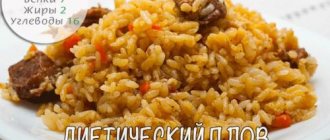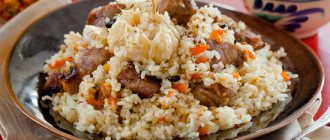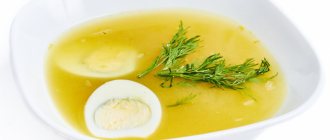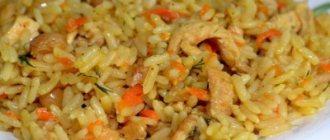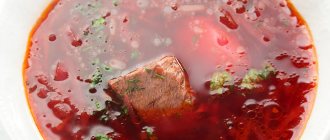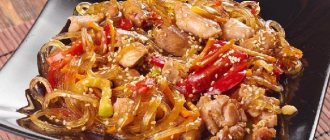In this description of the Uzbek pilaf recipe there will be a video at the very end of the article in two series. The video is normal, but you can’t call it a video recipe, since it doesn’t indicate the exact proportions of the ingredients - how much to put in - how much rice, how many carrots, onions, how many spices in grams. But, in general, the video is very good, it conveys the very basis of preparing real Uzbek and delicious pilaf. The video indicates the amount of oil per 1 kg - 200 ml of oil, and that pilaf is prepared for 3.5 kg. So, these 3.5 kg are rice, so 200 ml of oil is needed for 1 kg of rice, and 700 ml for 3.5 kg. So, let’s describe the recipe itself a little in our own words, based on the calculation if you prepare pilaf for 1 kg of rice.
1 – Rice 1kg (large and round, white like pearls, “alanga”, “lazar” varieties)
2 – Lamb meat 1 kg (also prepare 3 – 4 bones... watch the video)
3 – Onions 3 large onions (5 medium ones, or 100 – 150 g, maybe a little more – you won’t spoil the pilaf with onions)
4 – Carrots 700 – 800 gr.
5 – Vegetable oil 200 ml (tail fat, cottonseed oil, olive)
6 – Nukhut peas 30 – 40 gr.
7 – Barberry 10 – 15 gr. Raisins (light or yellow raisins 0.5 cups).
8 – Cumin 1 tsp (gives a unique taste and aroma, golden color to the pilaf).
9 – Saffron 1 tsp. Black pepper. Ground red pepper 1 tsp, garlic 3 heads.
10 – Chili pepper (1 pod). Salt (3 tsp, or to taste after salt), 1 tsp grains .
The best thing is to cook real pilaf on a live fire - on wood; gas is in second place; third place on the electric stove, and only after in the multicooker and similar devices. Why and what is the difference? The whole difference is that wood fire, gas and electricity have different energy, and the best of them is live fire, that is, wood fire (in general, for cooking any food).
Next, to prepare pilaf you need a cauldron, cast iron and thick-walled, or a kettle (you can, of course, cook pilaf in a cast-iron deep frying pan, but this is only for one or two servings).
Well, the preparation itself is well shown in the video. Watch the video and remember, write it down so you don’t forget, and try to cook pilaf. You will succeed, and the second time you will cook faster and better. Let us briefly describe the preparation procedure.
Place a cauldron or kettle on the fire and let the cauldron get hot, then pour oil into the heated cauldron. The oil should be well heated. Place 3-4 meat bones in hot oil and fry them, stirring until golden brown. Then place the onion, cut into large and thick rings (so the onion will not burn, do not cut finely), stirring the onion and fry until light brown. Next, add the cooked meat in medium pieces of about 50 grams, and stir-fry everything until golden brown. Add the carrots, cut into large strips, and continue stir-frying everything. The carrots should settle and take on a brownish tint. Next, pour 1 liter of cold water, bring to a boil over medium heat, add spices - pepper, salt, saffron, cumin, a little grain on the tip of a knife (you can add a bay leaf), soaked peas, without covering with a lid, we continue to simmer it all for about 40 minutes. Next, add the rice (the rice should be washed 5-6 times, and soaked in warm salted water for 2-3 hours before cooking), level it with a slotted spoon over the entire surface, put barberries and soaked raisins in the rice, a pinch of the rest of the cumin and a little saffron. And, stir all this evenly only on the surface - the rice itself, without going deep into the meat and carrots. As soon as the rice absorbs water and becomes half-cooked, put the heads of garlic and chili peppers on top, and the seeds removed in advance (shown in the video). Close the lid, reduce the heat to low, or reduce the gas to the lowest setting, and leave to simmer for 20 minutes. But after about 10 minutes, you need to make holes in the surface of the rice with a wooden stick or a wooden spoon handle so that steam escapes and everything cooks evenly, and close the lid again until it is fully cooked. Then we open it and begin to carefully stir the pilaf so that everything from below rises up, forming a mound of meat on the top of the head.
How many servings of pilaf can be obtained from 1 kg of rice?
Most often, according to the classic recipe, pilaf is prepared for 2-3 days, and at least 3 people eat it. Then 1 kg is enough to make a proper and tasty dish. From 1 kg of rice you will get approximately 4 kg of pilaf if you take 1 kg of meat, carrots and 600-700 g of onions (or even a little more vegetables).
Important! Rice does not increase in weight during cooking, it simply takes away the water used. At the same time, its volume grows at least 3-4 times, and the Devzir variety can increase up to 6-7 times. That is why in many traditional recipes the proportions of cereals are reduced - up to 500-600 g per 1 kg of meat.
If the output is 4-4.5 kg of pilaf, this will be enough for 10-11 large portions of 350-400 g. If there are many men among the guests, they will easily eat this amount. If it is mainly women who come to pilaf, then you will get more than 12 servings at the rate of 250 g per person.
A note about pilaf - real Uzbek pilaf
1 422
In this description of the Uzbek pilaf recipe there will be a video at the very end of the article in two series. The video is normal, but you can’t call it a video recipe, since it doesn’t indicate the exact proportions of the ingredients - how much to put in - how much rice, how many carrots, onions, how many spices in grams. But, in general, the video is very good, it conveys the very basis of preparing real Uzbek and delicious pilaf. The video indicates the amount of oil per 1 kg - 200 ml of oil, and that pilaf is prepared for 3.5 kg. So, these 3.5 kg are rice, so 200 ml of oil is needed for 1 kg of rice, and 700 ml for 3.5 kg. So, let’s describe the recipe itself a little in our own words, based on the calculation if you prepare pilaf for 1 kg of rice.
1 – Rice 1kg (large and round, white like pearls, “alanga”, “lazar” varieties)
2 – Lamb meat 1 kg (also prepare 3 – 4 bones... watch the video)
3 – Onions 3 large onions (5 medium ones, or 100 – 150 g, maybe a little more – you won’t spoil the pilaf with onions)
4 – Carrots 700 – 800 gr.
5 – Vegetable oil 200 ml (tail fat, cottonseed oil, olive)
6 – Nukhut peas 30 – 40 gr.
7 – Barberry 10 – 15 gr. Raisins (light or yellow raisins 0.5 cups).
8 – Cumin 1 tsp (gives a unique taste and aroma, golden color to the pilaf).
9 – Saffron 1 tsp. Black pepper. Ground red pepper 1 tsp, garlic 3 heads.
10 – Chili pepper (1 pod). Salt (3 tsp, or to taste after salt), 1 tsp grains .
The best thing is to cook real pilaf on a live fire - on wood; gas is in second place; third place on the electric stove, and only after in the multicooker and similar devices. Why and what is the difference? The whole difference is that wood fire, gas and electricity have different energy, and the best of them is live fire, that is, wood fire (in general, for cooking any food).
Next, to prepare pilaf you need a cauldron, cast iron and thick-walled, or a kettle (you can, of course, cook pilaf in a cast-iron deep frying pan, but this is only for one or two servings).
Well, the preparation itself is well shown in the video. Watch the video and remember, write it down so you don’t forget, and try to cook pilaf. You will succeed, and the second time you will cook faster and better. Let us briefly describe the preparation procedure.
Place a cauldron or kettle on the fire and let the cauldron get hot, then pour oil into the heated cauldron. The oil should be well heated. Place 3-4 meat bones in hot oil and fry them, stirring until golden brown. Then place the onion, cut into large and thick rings (so the onion will not burn, do not cut finely), stirring the onion and fry until light brown. Next, add the cooked meat in medium pieces of about 50 grams, and stir-fry everything until golden brown. Add the carrots, cut into large strips, and continue stir-frying everything. The carrots should settle and take on a brownish tint. Next, pour 1 liter of cold water, bring to a boil over medium heat, add spices - pepper, salt, saffron, cumin, a little grain on the tip of a knife (you can add a bay leaf), soaked peas, without covering with a lid, we continue to simmer it all for about 40 minutes. Next, add the rice (the rice should be washed 5-6 times, and soaked in warm salted water for 2-3 hours before cooking), level it with a slotted spoon over the entire surface, put barberries and soaked raisins in the rice, a pinch of the rest of the cumin and a little saffron. And, stir all this evenly only on the surface - the rice itself, without going deep into the meat and carrots. As soon as the rice absorbs water and becomes half-cooked, put the heads of garlic and chili peppers on top, and the seeds removed in advance (shown in the video). Close the lid, reduce the heat to low, or reduce the gas to the lowest setting, and leave to simmer for 20 minutes. But after about 10 minutes, you need to make holes in the surface of the rice with a wooden stick or a wooden spoon handle so that steam escapes and everything cooks evenly, and close the lid again until it is fully cooked. Then we open it and begin to carefully stir the pilaf so that everything from below rises up, forming a mound of meat on the top of the head.
Video 1 Part one Uzbek pilaf
Video 2 Part two Uzbek pilaf

Other category materials:
How to cook hazelnuts in sugar syrup - lokhum-tertik, a dish of Armenian cuisine
Cake "Sweet Prague" - a quick recipe in a slow cooker
Cake “Honey Balls” recipe with photo
5 recipes for pancakes from different types of flour (spelt, oat, corn, rice, chickpeas)
Apricot-melon jam for the winter - step-by-step recipe
The best way to cook shish kebab: recipe with kefir
Salted milk mushrooms with vodka - an old recipe for pickling mushrooms
Pie with sprats - step-by-step recipe with photos
Number of products for pilaf for 20 people
A very interesting recipe can be used to prepare pilaf for 20 people (based on 300 g per serving):
- 1 kg each of lamb loin and beef tenderloin;
- 2 kg steamed short grain rice;
- 1.5 kg carrots;
- 1.5 kg of onion;
- at least 350 ml of refined oil;
- 3 heads of garlic;
- a bunch of parsley, dill;
- salt – 2 tbsp. l.;
- pepper and paprika - 1 tsp each, you can take more paprika;
- dried crushed barberry - 2 tbsp. l.;
- 3 tbsp. l. cumin and saffron.
You can adapt this recipe for 15 people, slightly reducing the amount of rice (up to 1.8 kg) and onions (up to 700-1000 g). However, the portions will still be large.
What portion of food is suitable for weight loss
Hello, my dear readers. Eating 5-6 times a day, breaking up your diet, is one of the most common pieces of advice for anyone losing weight.
However, how can you determine which portion of food is the right one to lose weight? How not to overeat at once and instead of getting the long-awaited plumb line on the scales, gain weight? The question is not as simple as it turns out.
By the way, I have already talked about how to organize weight loss with the help of a fractional diet. Now it's time to figure out how much and what to put on the plate.
And before we start calculating portions, let's understand - what is a portion?
As the science of nutrition says, it is not specifically a plate of food, as some might think. The plates are different.
This is one conventional unit of one specific product (or type of product) - meat, pasta, fruits, vegetables, etc.
How much to put on a plate
It is always important to monitor the amount of food consumed, including when eating properly. Research shows that people do not always adequately estimate the amount of food they eat.
And, by the way, you can find out if you are overeating by performing a simple test, which I mention in the article “Why we overeat.”
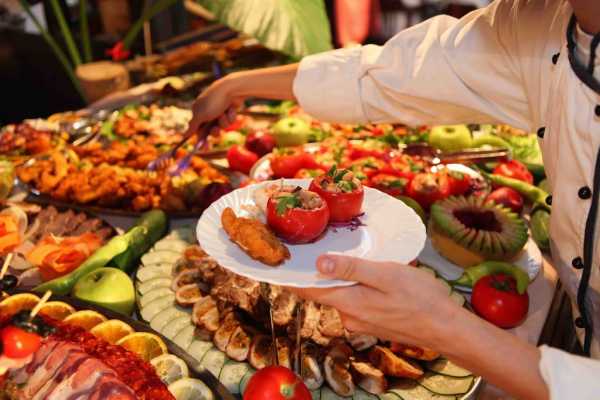
There are several ways to measure a portion.
Using scales, spoons and glasses, as well as using the palm of your hand. The last one is the most popular and simplest. But not always applicable - for example, you wouldn’t measure soup with your palms, would you?
Pharmacy-like precision
Scales - this is probably the most expected method - will show the weight literally in grams. And the longest and most inconvenient.
But, if you want mathematical accuracy, then it may be useful to you, especially at first. True, you will have to outweigh everything you cook.
Kitchen scales should always be on hand. However, having filled your hand, as they say, after a while you yourself will be able to determine the required amount by eye.

It couldn't be simpler
The easiest way is to adhere to the “fist rule” - approximately this (one or two fists, everything is individual here) is the volume of our stomach on an empty stomach, if it is not distended.
Hence the need to put so much food in it so as not to stretch it. At the same time, of course, you shouldn’t deceive yourself, and after eating “one fist”, add another one to the plate.
Let me remind you that the easiest way not to overeat is to reduce the plate, and at the same time the spoon. A study conducted by Cornell University in the USA among nutrition experts confirms that even nutritionists can make mistakes about portion sizes. A group of experts were given plates and spoons of different sizes and asked to help themselves to ice cream. As a result, those who had larger plates or spoons unknowingly put in 31% and 14% more ice cream, respectively, than those who had smaller cutlery.
We look at the palm
This method is more complex, but more accurate compared to the previous one. And in fact, it’s very simple: you look at your palm and you know exactly what portion should be a normal size.
Just let's make it clear that all weight measures here are taken without a slide. Well, now the main thing to remember is that a portion of food at one time is:
The protein product is the size of the palm of your hand. This is approximately 100 grams of meat (chicken or fish)
Complex carbohydrates – palm or fist
Potatoes, rice – front part of the fist (approximately 75-100g)
Vegetables (salads) – two palms folded together
Fruit – clenched fist (about 200g)
Fats – one phalanx of the thumb
Greens - do not confuse them with vegetables. All kinds of salads, dill, parsley and the like can be eaten without restrictions.
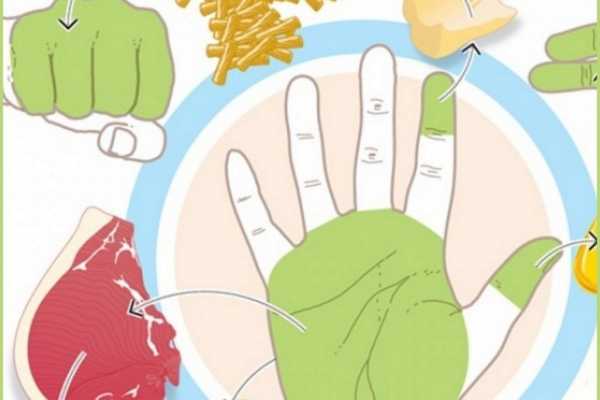
The palm and fingers are also suitable as “weight measures”. For example:
A teaspoon (corresponds to the size of your thumbnail) is 5 grams (for example, this is the amount of vegetable oil per day)
A tablespoon is already equal to 10 grams
A handful is equivalent to two tablespoons of liquid (so we found something to measure our soup with). In general, a serving of soup, as nutritionists say, is 150-200g, or a regular glass.
On the advice of nutritionists
Nutritionists believe that to lose weight, a person needs to reduce the calorie content of their daily food by about 500 kcal.
And then his diet will be equal to:
two protein palms and one carbohydrate palm
three fists of fruits and vegetables
one phalanx of the thumb fat
Advice: as for me, it is not at all convenient to measure using the palm of your hand - it is better to mentally divide the plate into 4 parts. Give a quarter to proteins, the other quarter to grains. And set aside half for vegetables and salads. Visual perception, by the way, is one of the effective ways to reduce food consumption. Often we don’t even notice how we eat a bag of chips or cookies, “carrying” one thing after another.
Determining the correct amount of food is described quickly, simply and clearly in this video:
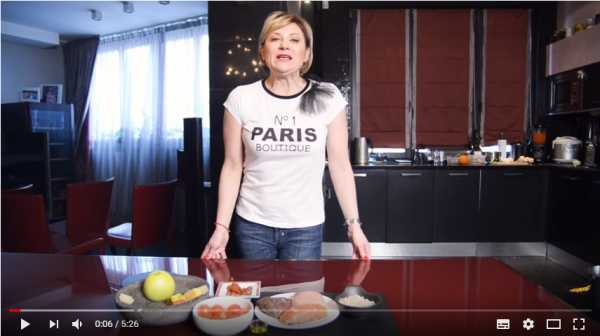
This is mathematics, dear friends. What do you think about this? Do you use any of your own methods to determine portion size?
Quality quantity
Well, and most importantly, when you decide to take care of your figure, first of all, change not the size of the portions, but the quality of the products themselves.
Fewer fast carbohydrates – more slow, long-digesting carbohydrates. A bowl of rich, rich soup is not at all the same as a plate of coleslaw.
The first one will quickly leave the stomach, and the fat will settle where it is not needed, but the second one will take a long time to digest and you won’t eat for a long time.
Even 100 g of meat baked in the oven is much healthier for the figure than the same 100 g, but fried in oil (although I do not recommend meat to my readers due to the great controversy of this product for the benefit of the body).
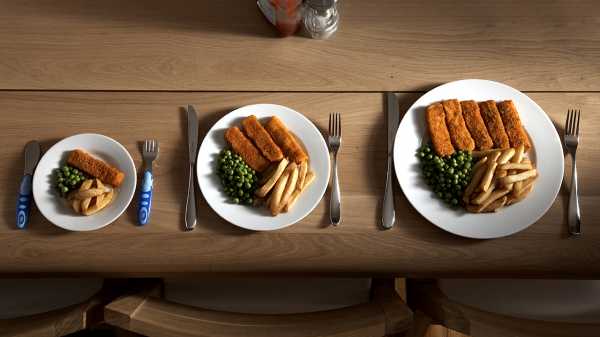
From online reviews
“Fortunately, I was able to accustom myself to small portions, it was not easy, at first the body did not want to understand whether it had eaten or not. But I want to talk now not about this, but about my friend. She weighed, you won’t believe it, 200 kg, and in two years she was able to lose weight to clothing size 46. And she achieved this by reducing the portion size - she ate 300-350 g every 2 hours. She has maintained the weight for two years.”
What to remember
So, what important things did we learn today:
- You don't need a scale to determine your portion size correctly.
- Use the palm and fist method - these “gadgets” are always with you and will never let you down
- At the same time, do not forget about the quality of food.
Well, that's all I have for today. See you again in blog articles!
tvoy-ves.ru
